ลอจิสติกส์ดิจิทัลในที่นี้หมายถึงระบบอัตโนมัติและการแปรรูปดิจิทัลกระบวนการเพื่อเคลื่อนย้ายสินค้า ลอจิสติกส์ดิจิทัลอำนวยความสะดวกแก่องค์กรธุรกิจห้างร้านวางแผนและทำงานลอจิสติกส์และซัพพลายเชนได้อย่างง่ายดาย ตอบสนองต่อพฤติกรรมความต้องการผู้บริโภคที่เปลี่ยนแปลงอย่างเท่าทัน อีกทั้งจัดการงานรูทีนได้แบบอัตโนมัติโดยไม่ต้องเสียเวลา ทำให้ผู้ใช้งานโฟกัสกับที่สำคัญด้านลอจิสติกส์ได้อย่างมากขึ้น ลอจิสติกส์ดิจิทัลอัดแน่นไปด้วยเทคโนโลยีอย่างเช่น แมชชีนเลิร์นนิง, AI, IoT, คลาวด์คอมพิวติ้ง และบล็อกเชน พร้อมให้ตักตวงศักยภาพเพื่อประโยชน์ในการบริหารจัดการงานซัพพลายเชนได้อย่างเต็มที่
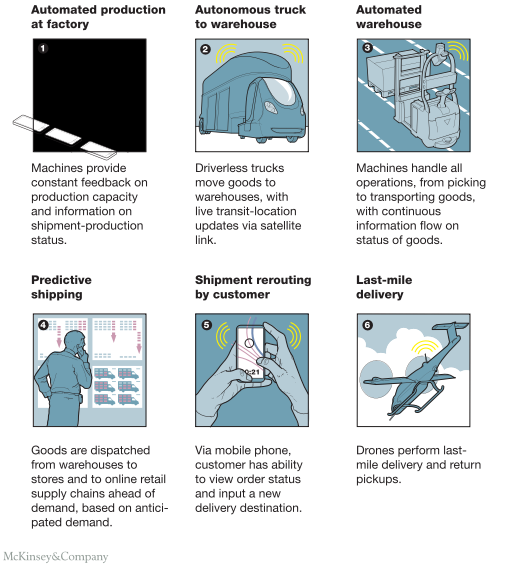
Source: Supply Chain 4.0 in consumer goods, McKinsey and Company
สิ่งที่กล่าวมานี้ ผลพลอยได้ก็คือ อุตสาหกรรมที่มีความใกล้ชิดและยึดโยงกับลอจิสติกส์ เช่น การค้า เข้าร่วมขบวนปฏิวัติทางเทคโนโลยีดิจิทัลไปด้วย แพลตฟอร์มดิจิทัลส่งให้บริษัทขนาดเล็ก ได้เข้าถึงเวทีระดับโลกเพื่อแข่งขันประชันกับยักษ์ใหญ่ในวงการ บทวิเคราะห์ของ Accenture กล่าวว่าการแปรรูปดิจิทัลทางลอจิสติกส์ จะสามารถปลดล็อกเม็ดเงินกว่า 1.5 ล้านล้านเหรียญสหรัฐให้แก่ธุรกิจลอจิสติกส์และเกิดประโยชน์แก่สังคมอีกเป็นมูลค่ากว่า 2.4 ล้านล้านเหรียญสหรัฐภายในปี 2025 ทั้งนี้ การช่วยบริษัทขนาดเล็ก ให้สามารถยกระดับสมรรถนะของตนเอง ทำให้เกิดความคึกคักในตลาดและส่งผลดีต่อสังคมในภาพรวม
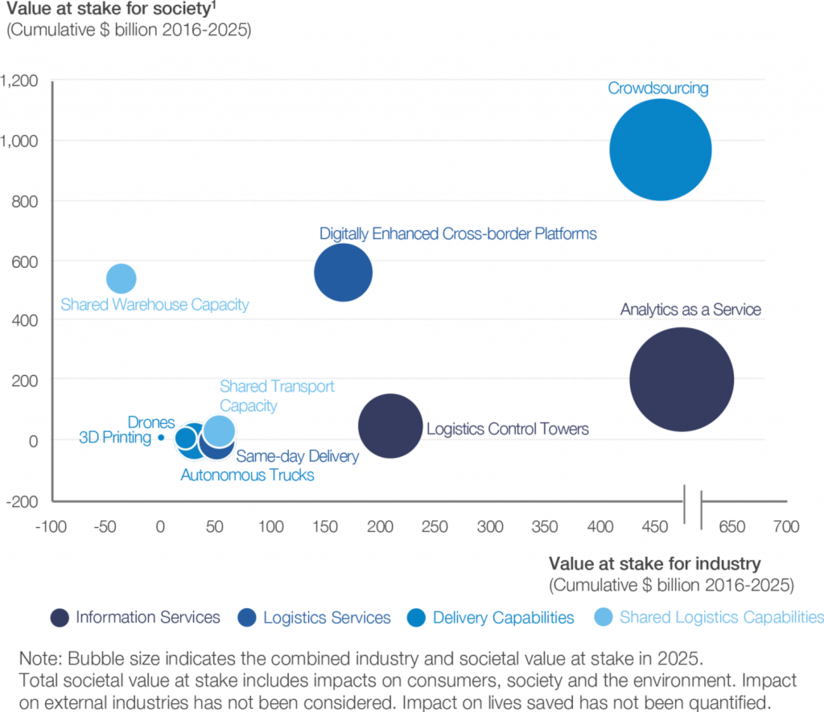
Source: World Economic Forum, Accenture analysis
ผลวิจัยของ McKinsey พบว่า 50 กว่าเทคโนโลยีในปัจจุบันสามารถนำไปต่อยอดเพื่อประกอบสร้างเป็นระบบลอจิสติกส์อัตโนมัติได้ อย่างไรก็ตาม โจทย์ข้อแรกที่ธุรกิจลอจิสติกส์จะต้องตอบให้ได้คือจะต้องเริ่มต้นลงทุนอย่างไรเพื่อให้เกิดตอบแทนสูงสุด ไม่มีใครอยากได้เทคโนโลยีตกรุ่น เพราะนอกจากทำให้ประสิทธิภาพการดำเนินธุรกิจด้อยกว่าคู่แข่งที่เลือกลงทุนในตัวเลือกเทคโนโลยีที่ดีกว่า ยังทำให้การดำเนินธุรกิจแย่กว่าคู่แข่งที่ไม่ได้ลงทุนอีกด้วย รายจ่ายไม่จำเป็นที่เกิดจากการแทนที่วัสดุอุปรกรณ์สภาพดีไม่หมดอายุการใช้งาน จะยิ่งเป็นการลำลึกดำดิ่ง ตอกย้ำการลงทุนที่ผิดพลาดล้มเหลว
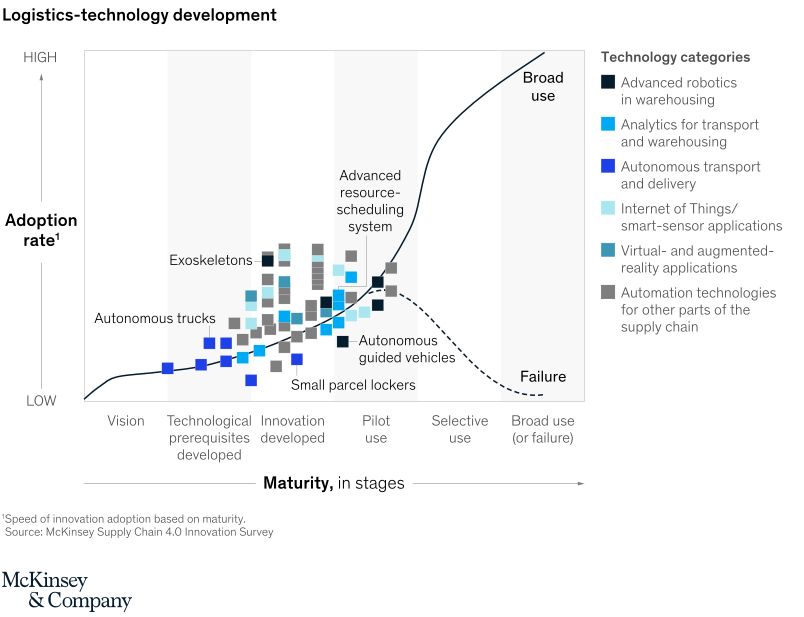
Source: McKinsey Supply Chain 4.0 Innovation Survey
ธุรกิจค้าปลีกที่มีหน้าร้านต่างก็ระดมรับมือกับอีคอมเมิร์ซอย่างดุเดือด โดยการสร้างครือข่ายการจัดจำหน่ายให้เป็น Omnichannel ซึ่งผู้บริโภคสามารถซื้อและรับสินค้าผ่านช่องทางใดก็ได้ โดยอาจซื้อออนไลน์และรับสินค้าที่บ้านซึ่งเป็นรูปแบบอีคอมเมิร์ซแบบคลาสสิก หรือซื้อในร้านแต่รับสินค้าที่บ้านซึ่งเป็นตัวเลือกที่บริษัทเสื้อผ้าบุรุษ Bonobos และบริษัทอื่นให้บริการอยู่ในขณะนี้ หรือจะเป็นซื้อในร้านและรับสินค้าที่ร้านก็ยังได้ ผู้บริโภคต้องการความรวดเร็วการจัดส่งสินค้าที่มากขึ้น ตรงนี้เองที่เกิดความจำเป็นทางอาคารสถานที่มากขึ้นเพื่องานคลังสินค้า นำมาซึ่งความซับซ้อน จะเห็นว่าการสร้างซัพพลายเชนเพื่อรองรับ Omnichannel นั้นซับซ้อนมาก
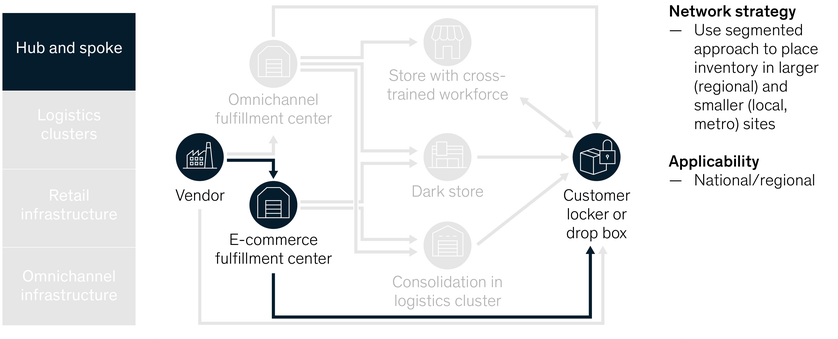
Source: Automation in logistics: Big opportunity, bigger uncertainty, McKinsey & Company
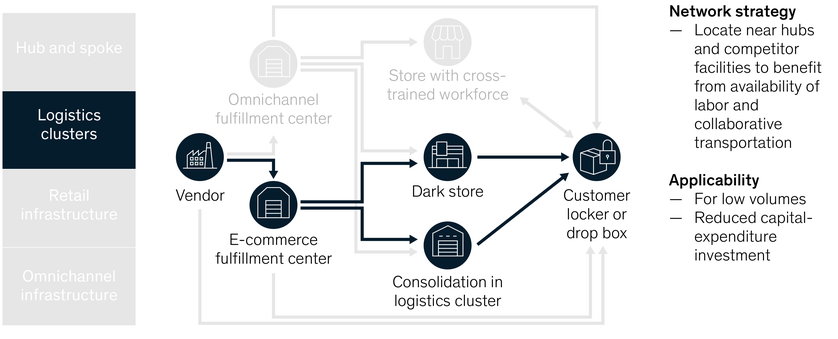
Source: Automation in logistics: Big opportunity, bigger uncertainty, McKinsey & Company
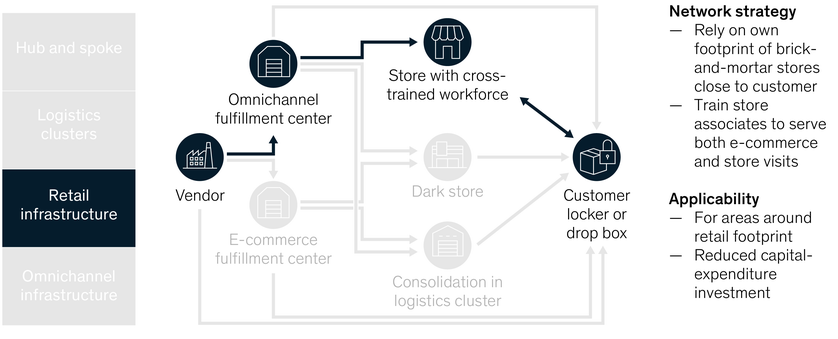
Source: Automation in logistics: Big opportunity, bigger uncertainty, McKinsey & Company
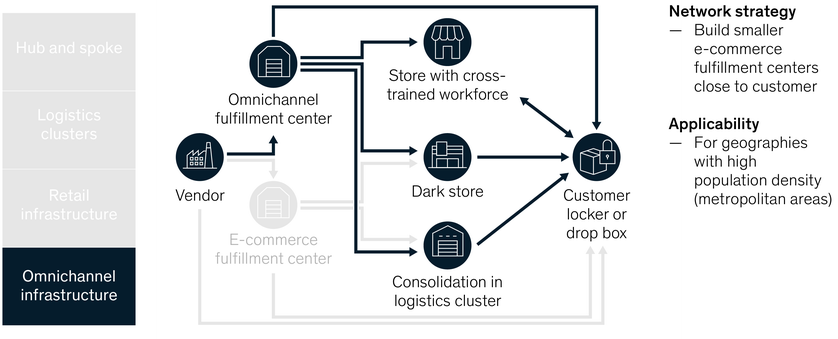
Source: Automation in logistics: Big opportunity, bigger uncertainty, McKinsey & Company
ระบบติดตามลอจิสติกส์แบบเรียลไทม์และระบบการจัดการข้อมูลเป็นที่ต้องการมากขึ้นนั้น เป็นปัจจัยผลักดันการเติบโตของตลาดลอจิสติกส์ดิจิทัลทั่วโลก นอกจากนี้ คาดว่าอุตสาหกรรมอีคอมเมิร์ซและตลาดลอจิสติกส์ผู้บริโภคที่พุ่งทะยาน จะเสริมแรงเพื่อขับเคลื่อนตลาดลอจิสติกส์ดิจิทัลให้เติบโต ทว่าเพดานเงินทุนที่สูงสำหรับผู้เริ่มต้นหน้าใหม่ โครงสร้างพื้นฐานทางเทคโนโลยีที่ยังไม่พร้อม และประเด็นทางความปลอดภัยข้อมูลจะชะลอการเติบโตของตลาด และแม้ว่าจะเป็นเช่นนั้นก็ตาม บทวิเคราะห์ของ Acumen Research and Consulting ได้กล่าวว่า การนำเทคโนโลยีบล็อกเชนและ IoT เข้ามาประยุกต์ใช้งานด้านลอจิสติกส์ อีกทั้งการไหลของเม็ดเงินลงทุนที่เพิ่มขึ้นที่มีต่อธุรกิจสตาร์ทอัพลอจิสติกส์ จะยังคงสร้างโอกาสให้กับตลาดลอจิสติกส์ดิจิทัลได้อยู่
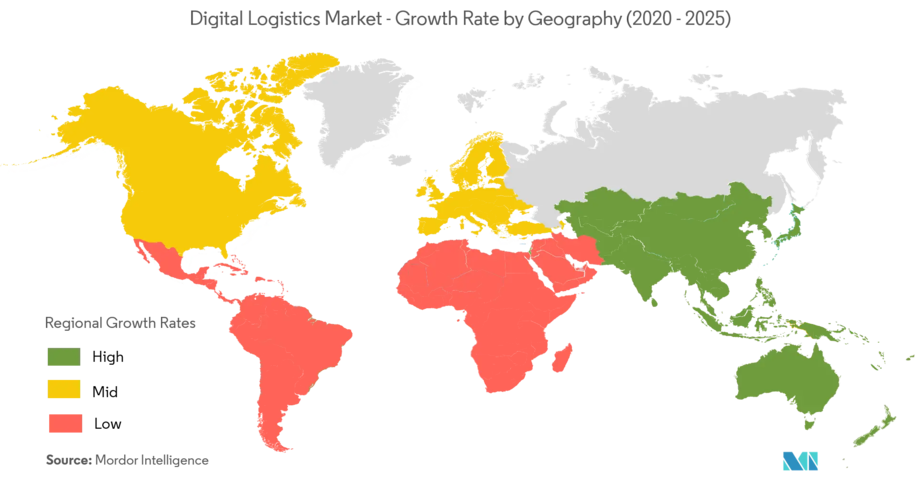
Source: Mordor Intelligence
การแปรรูปดิจิทัลจะมีแต่จะพลักดันขับเคลื่อนให้ผู้บริโภคเกิดความคาดหวังที่มากขึ้นอย่างไม่สิ้นสุด ไม่ว่าจะเป็น การติดตามคำสั่งซื้อแบบเรียลไทม์ สถานะสินค้าคงคลังปัจจุบัน และการอัปเดตการจัดส่ง ข้อมูลปริมาณมหาศาล และข้อมูลเชิงลึกที่ตกผลึกจากกระบวนการทางดิจิทัล ในที่สุดจะสามารถนำมาประกอบแก้ปัญหาที่ซับซ้อนในห่วงโซ่อุปทานแบบ end-to-end ข้อมูลที่ไหลรวมสู่ระบบ AI คือพลังงานที่หล่อเลี้ยงปัญญาประดิษฐ์และขับเคลื่อนเวิร์กโฟลว์อัตโนมัติ ผู้ประกอบการต้องมีระบบรวบรวมข้อมูลที่เกิดขึ้นจากทุกกระบวนการในห่วงโซ่คุณค่าของตน เพื่อให้แน่ใจว่าข้อมูลเชิงลึกที่ตกผลึกจากการวิเคราะห์ สามารถนำไปปรับใช้เพื่อเพิ่มประสิทธิภาพกิจการได้จริง ก่อเกิดเป็นไลน์สินค้าบริการใหม่ได้ ทั้งนี้ทั้งนั้นสิ่งที่จำต้องระลึกอยู่เสมอก็คือ คุณค่าอรรถประโยชน์ของข้อมูล จะขึ้นอยู่กับความโปร่งใส ความน่าเชื่อถือ และความมั่นคงปลอดภัยของแหล่งข้อมูล
Article by: Asst. Prof. Suwan Juntiwasarakij, Ph.D. & MEGA Tech












